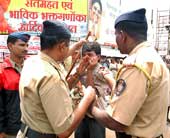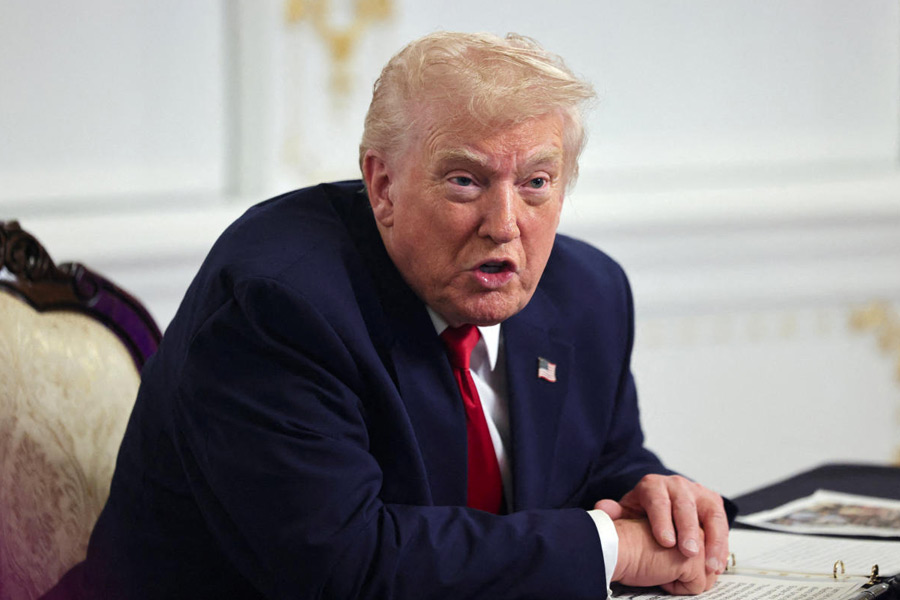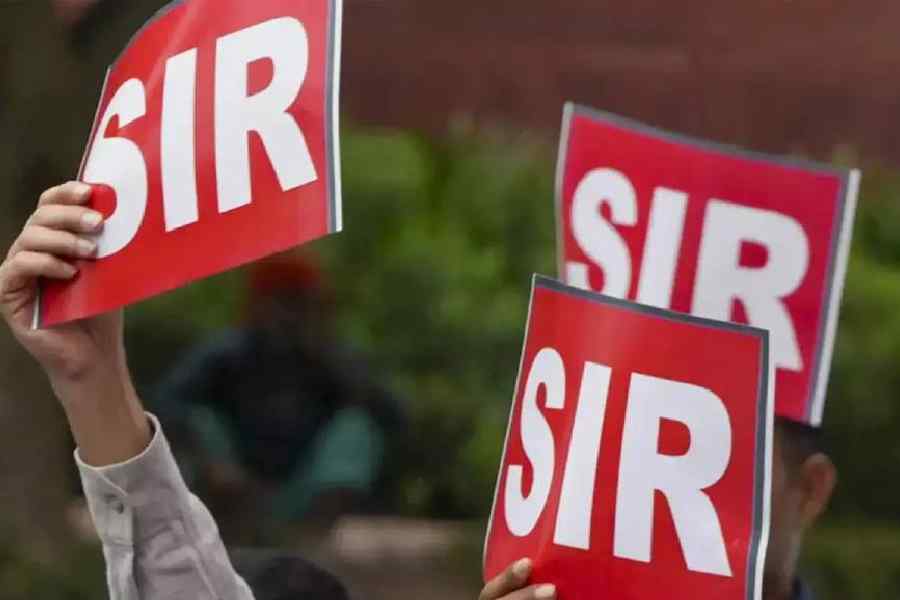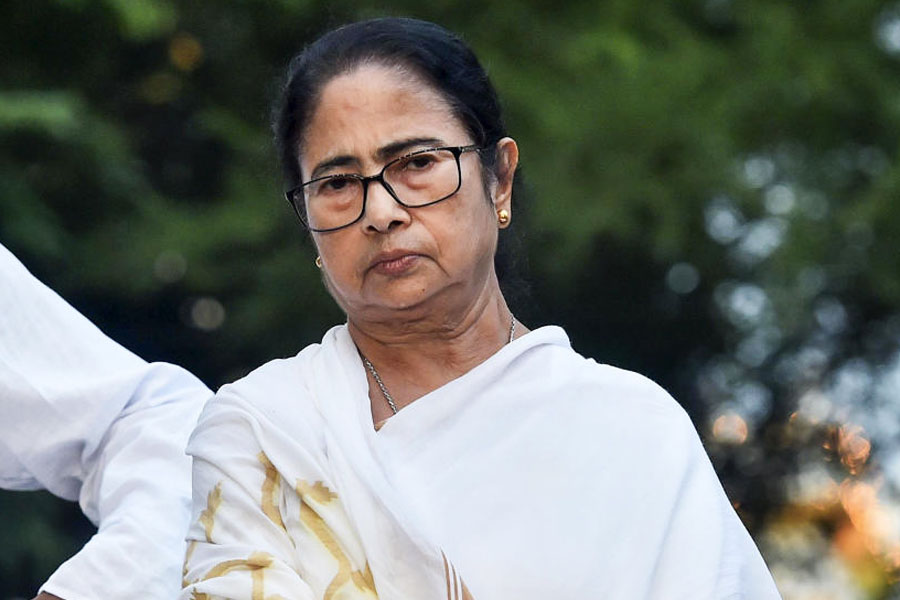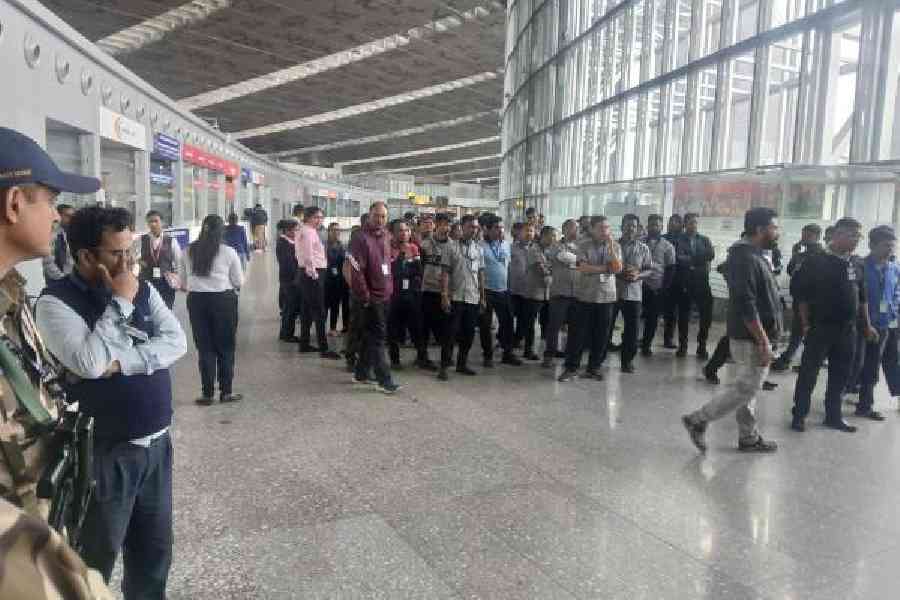|
|
| Easy prey |
The police commissioner of the country’s financial capital is accused by an investigating agency, comprising police officers, of “sins of omission and commission” in a multi-crore financial scam. The state government, knowing that his role in the scam was being probed, had nonetheless decided to promote him a month before his retirement. But the public outcry over the accusations forces the police commissioner to go on leave.
Just days later, outstation candidates arriving in the city for an all-India recruitment exam are, in full view of the police, beaten up and pushed into return trains by activists of a regional party. The police do nothing.
A retired police commissioner is held responsible, in an inquiry conducted by a high court judge, for the gunning down of nine innocent Muslims during a communal riot. A committee comprising bureaucrats exonerates him, overruling the judge’s findings. But the Supreme Court forces the state government to act against him. The former police commissioner is charged with murder, a paper arrest is carried out, and soon enough, without anyone getting wind of it, the police officer is discharged in the case with no opposition worth the name from the government lawyer. The government does not appeal against his discharge.
A large section of the police force of a state is accused by the country’s “premier investigative agency” of cremating hundreds of young Sikhs in its custody, without informing their families. This massacre, being investigated for the last eight years, is currently being heard by the National Human Rights Commission on the orders of the Supreme Court. But the parents whose sons were cremated continue to remain faceless except to the small group pursuing the case, and the policemen involved in these killings are promised immunity by the country’s home minister.
A retired army colonel, leading a protest by fisherfolk against the building of a port, dies after being beaten in a police lock-up. The army petitions the president, a judicial inquiry has been on for the past two years, but the policeman concerned continues in his post.
The continuing uproar over the Telgi affair proves that vocal sections of the public expect high standards of integrity from the police. However, as the above examples show, the same sections seem not to have such high expectations from policemen, vis-à-vis their relationship with the citizens whom they are supposed to protect.
The uncivilized behaviour of the Shiv Sainiks at Kalyan railway station could not have continued for more than five minutes had the railway police intervened to protect the easily identifiable north Indian passengers. The senior inspector of Kalyan railway police, Narayanrao Rajguru, justified his inaction by saying that the crowd was “huge”, as though policemen are trained or equipped to handle small crowds only.
The sight and sound of police lathis coming down on bodies is normally enough to disperse even huge mobs, at least until reinforcements arrive. But lathi-charging Shiv Sainiks is unheard of in Maharashtra, even though a booklet brought out by the state home department — and hence known to senior police officers — lists the Shiv Sena as one of the principal communal and violent outfits. Yet, from the director general of police to a constable, the entire force knows when to “control the situation” and when to stand by.
This phenomenon is neither new nor is it particular to Maharashtra. The police in India have always treated angry mobs differently, depending on its class, caste and community. Police firings on adivasis, Dalits, Muslims and workers are too numerous to be enumerated, while police firings on upper-caste or upper-class Hindus are very rare. The first category conjures up images of faceless mobs clamouring for something or the other, or hordes of bearded and skull-cap wearing fanatics. On the other hand, every police firing on the latter category has its own unique explanation — either it is a case of trigger-happy cops mistaking their victims for terrorists/criminals, or when the victim is leading a struggle for the faceless poor. Even in riot situations, when Hindus and non-Hindus are attacking each other, the police rarely fire on the Hindu mobs and when they do, their bullets somehow never reach their targets.
These double standards have been documented by judicial commissions of inquiry, but this has made no difference to police behaviour. Rarely have the findings of a judicial commission of inquiry been as widely discussed and their implementation as doggedly fought for, as those of the B.N. Srikrishna commission of inquiry into the 1992-93 Mumbai riots. But in the five years since they were made public, the police force in Mumbai continues to display the same communal prejudice for which the judge indicted it and recommended strict action against 31 officers. The concerned officers also continue on duty, some of them on higher posts.
Why does Ranjit Sharma have to put in his papers while Ram Deo Tyagi walks free, after his men were allegedly seen shooting dead a Muslim bakery manager begging for life at their feet, or dangling a crippled maulana from the first floor of a madarsah? Why does the inspector general of police, Sridhar Vagal, go to jail, while Nikhil Kapse, a mere sub-inspector, continues to be part of the city’s police force? Vagal is alleged to have made a fortune helping a criminal like Abdul Karim Telgi. Kapse was not only indicted by Srikrishna for ordering the firing on unarmed namazis inside a mosque, but was also himself reportedly seen shooting a Muslim dead while the latter was in his custody, just as he bent down to tend to his injured leg.
Many people heard the retired colonel, Pratap Save, plead with the deputy superintendent of police, Narendra Amin, not to beat him in the Umbargaon lock-up on the night of April 7, 2000. The protests at the colonel’s death have died since down and Amin remains untouched.
Our policemen continue to be as brutal as their predecessors who represented the colonial occupiers, not merely because the government protects them. As seen in the Telgi affair, media and public outcry can force the government to stop shielding accused policemen, publicly at least. But like the policemen, the media and vocal sections of citizens react differently to different categories of police misconduct. When Tyagi was charged with murder, the media interviewed police officers, who warned the government against demoralization and inaction in the next riot. (The hollowness of this threat was exposed within months, when eight Muslims and no Hindu were killed in the police action in Malegaon, though four times as many Muslims were killed in the riot as Hindus.)
The media did not ask these officers whether they justified the “action” for which Tyagi and his men were charged. Tyagi’s mental and physical condition as he rested in a luxurious hospital, ostensibly under arrest, made headlines. Activists pursuing the case were warned by lawyers about the communal backlash that could follow if the case went to trial. Meanwhile the victims of Tyagi and his officers waited, but in vain, for letters to the editor expressing outrage at the communally-motivated brutality of these “law-enforcers”. The same happened with the campaign to book the Punjab police officers responsible for at least 582 illegal cremations of Sikhs during the years of militancy.
Why is it alright for the police to take lives without provocation, but not take money by helping criminals in fraud? Is it because for the vocal sections of Indians, the lives of those normally killed by the police, the “pro-Pakistani traitors”, the “Khalistanis”, or the faceless “masses”, are not as valuable as public money?

